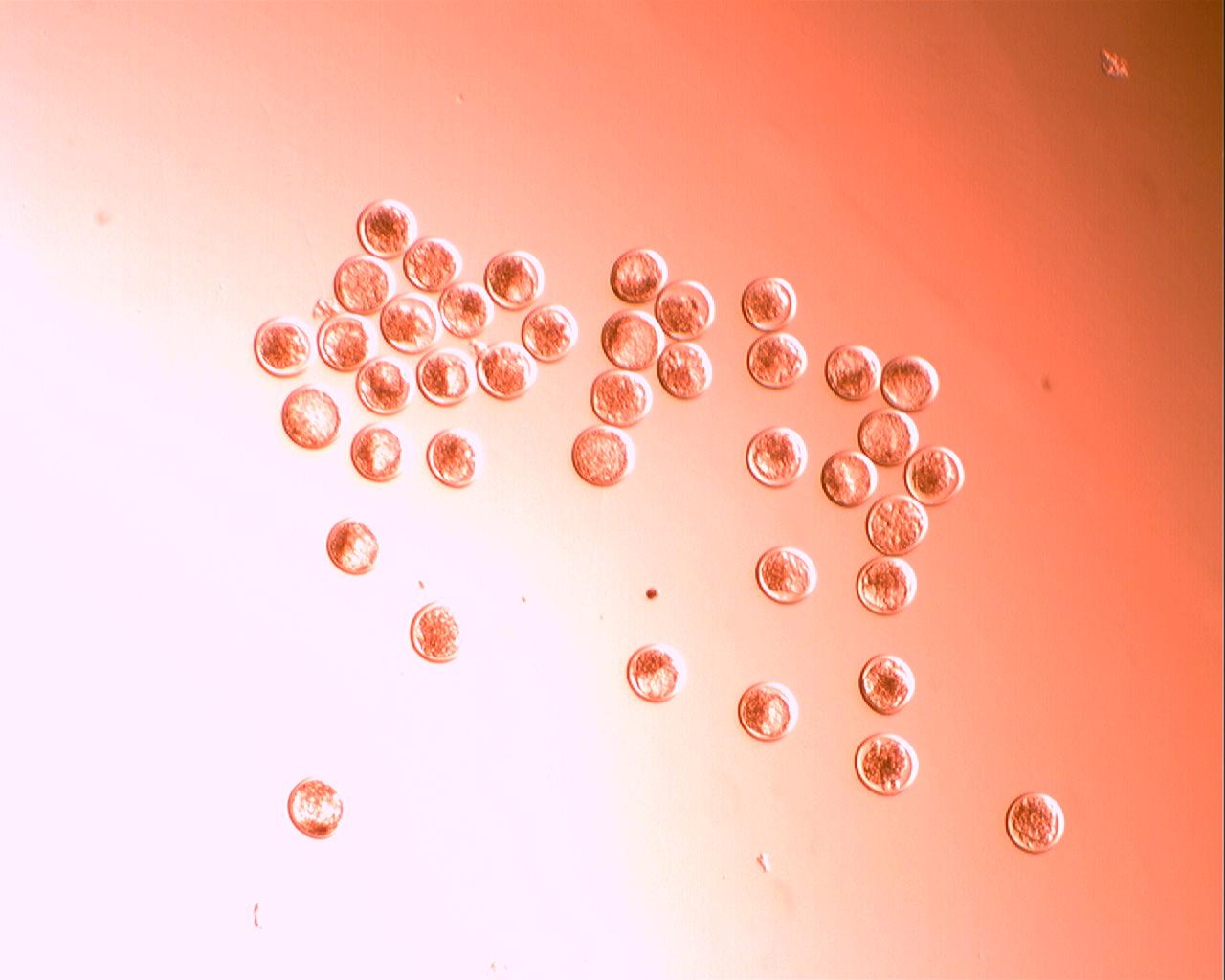It is simple to think of cattle breeding as following the following simple formula
+
+ 282 days =
Cow Bull
Adopting reproductive technologies such as Embryo Transfer (ET) changes the formula somewhat
+
+ 282 days + Recipients + $$ =
What is ET?
Embryo transfer (ET) describes a process that allows us to increase the number of calves that a single cow can produce in a year by removing embryos from her and implanting them into other cows. These recipients will give birth to the biological offspring of the donor cow.
The two main forms of embryo transfer have several features in common.
-
Both methods utilise the fact that within a cow’s ovary, there are many eggs developing at once. Normally only a single egg gets released per cycle and the others are wasted.
-
Both methods produce embryos that are either implanted or frozen about 7 days following fertilisation.
-
Whether they are transferred fresh or frozen, the embryos are transferred into recipients that cycled 6-8 (sometimes 6-10) days earlier.
-
Both processes can be carried out on farm although IVP requires that oocytes are taken back to a lab for a week.
The two ET processes are
1. MOET. Multiple Ovulation Embryo Transfer is the most popular form of ET.
- Donor cows are given a course of hormone treatments to increase the number of ovulations (super ovulation).
- Following oestrus the cow is inseminated.
- The embryos are flushed out seven days later.
- Embryos are graded in the lab (or mobile lab).
- The embryos can be implanted directly into recipients or frozen for later implantation.
- The process can be carried out on-farm or on an ET centre and is entirely non-surgical.
Once frozen, embryos can be transported, bought, sold, imported, exported and stored indefinitely. There is currently a large global trade in embryos and several hundred embryos will be imported into NZ this year. Because of better pregnancy rates, most if not all of these imported embryos will have been produced using the MOET technique.
2. TVR / IVP. TVR (Trans Vaginal Recovery) processes embryos within a laboratory.
- Using ultrasound to guide it, a needle is pushed through the donor’s vaginal wall and into her ovary.
- Immature eggs are sucked out.
- These are washed, graded and taken back to the lab.
- The Oocytes are fertilised and cultured for 8 days (IVP – In Vitro Production) before implanting or freezing.
While typically 2-3 times more expensive per calf than MOET and with lower pregnancy rates, TVR/IVP is useful on donors with some reproductive problems. It can also be carried out on cows up to 100 days pregnant. It doesn’t require farmers to administer twice daily injections but requires more sessions to achieve the same number of pregnancies. IVP calves can be oversized and lack thrift at birth. However, they develop into healthy adults.
MOET is the method used to produce over 70% of the total number of embryos produced in NZ (IETS Statistics and Data Retrieval Committee Report) and because of the much better pregnancy rate achieved, probably produces over 80% of ET calves annually.
Transfer of embryos
Embryos, whether fresh or frozen, IVP or MOET, are ultimately transferred into recipients. As they are seven days old at collection (or production (IVP)), embryos must be implanted into recipients that cycled 6-8 days prior to the transfer date – not cows that are cycling on the transfer date.
In our experience, normal pregnancy rates from embryos are:
MOET fresh – 60%
MOET frozen – 50%
IVP fresh – 40%
IVP frozen – 30%
When comparing pregnancy rates, it is important to compare “apples with apples”. The rates we quote are conservative on-farm results for full term pregnancies. Other results quoted are 42 and 60 day in calf rates and these will look 5-10% higher. However, if they don’t result in a calf, they are not really meaningful.
Pregnancy rates also vary depending on the type of recipient used. In 2012 Ova-Achievers’ own recipients held at a consistent 75% 60 day pregnancy rate. These recipients are either white-face heifers or dry carry over cows.
On average, we budget on 5 embryos and 3 calves per flush with MOET (fresh transfer) and 2.5 calves per flush from frozen embryos.
Donor cows can be flushed at 23 day intervals with up to 10 flushes per year if they are carried over empty.
